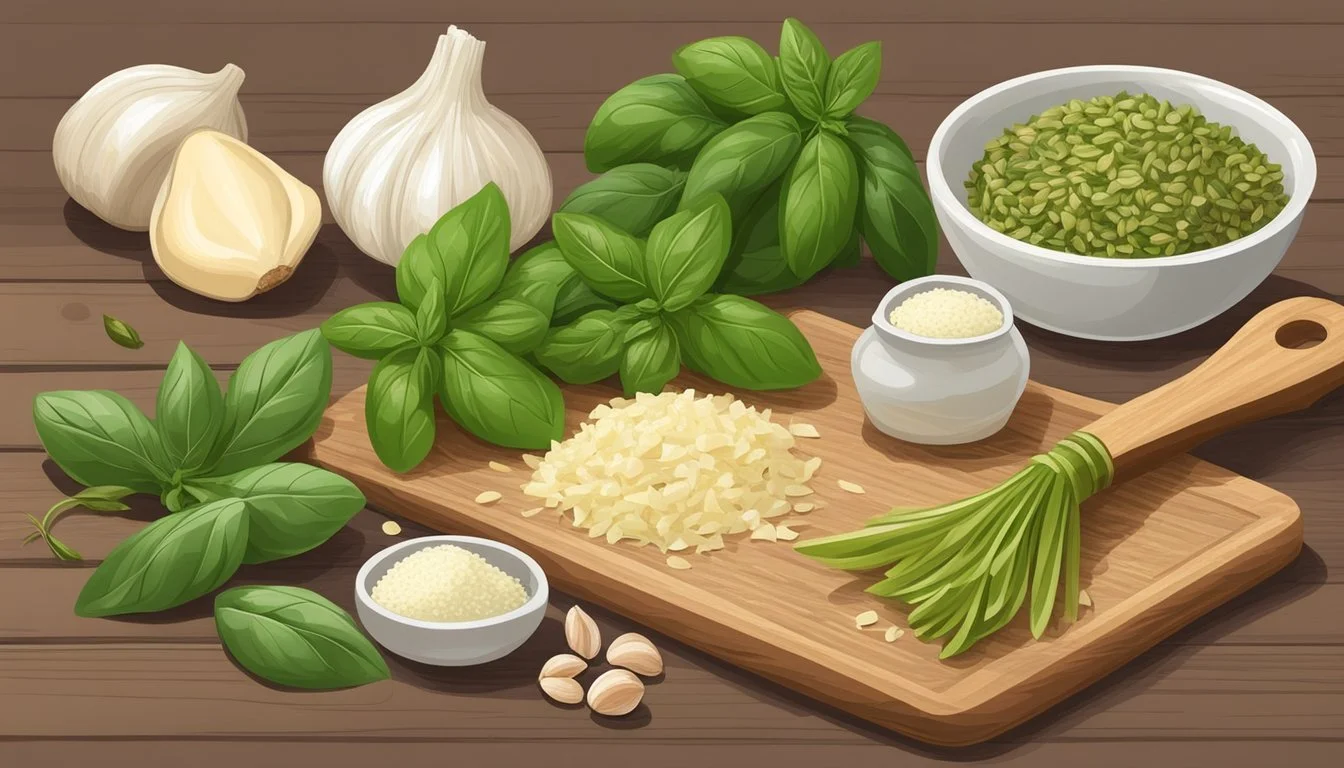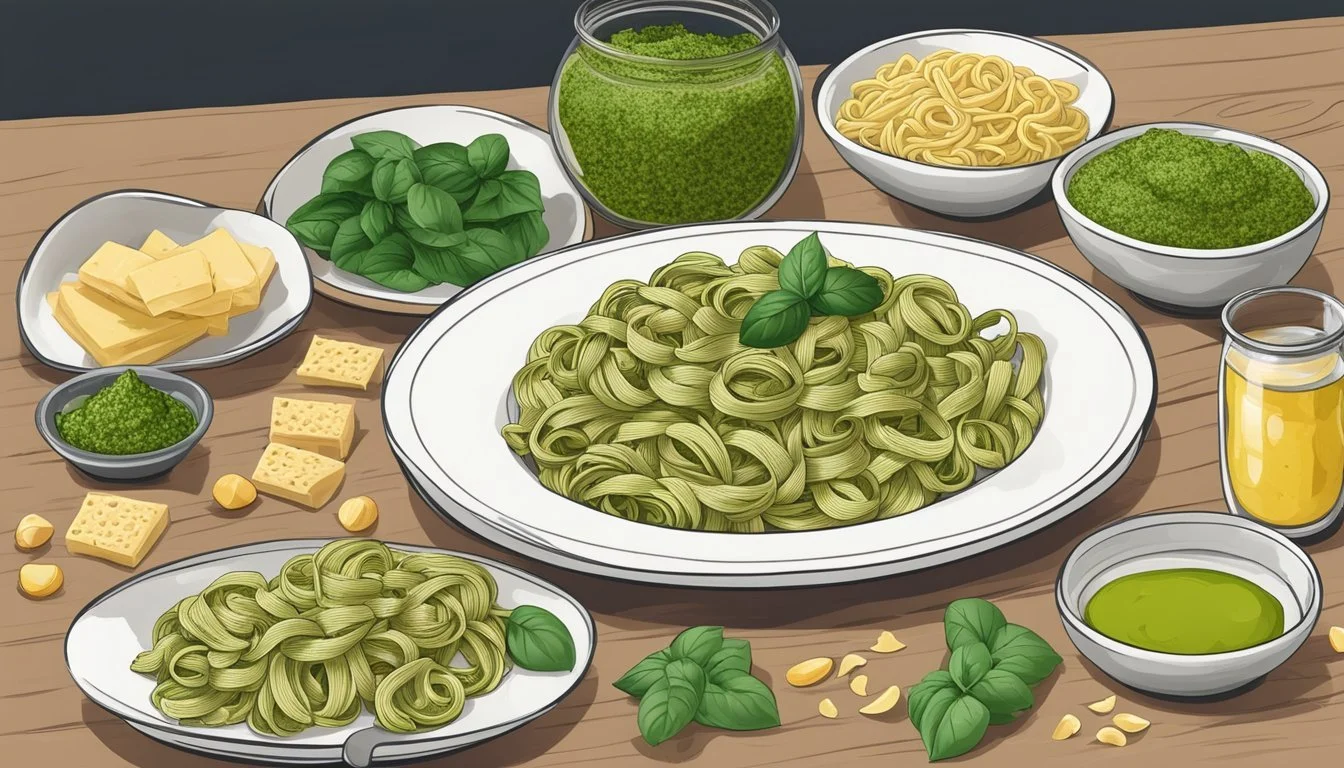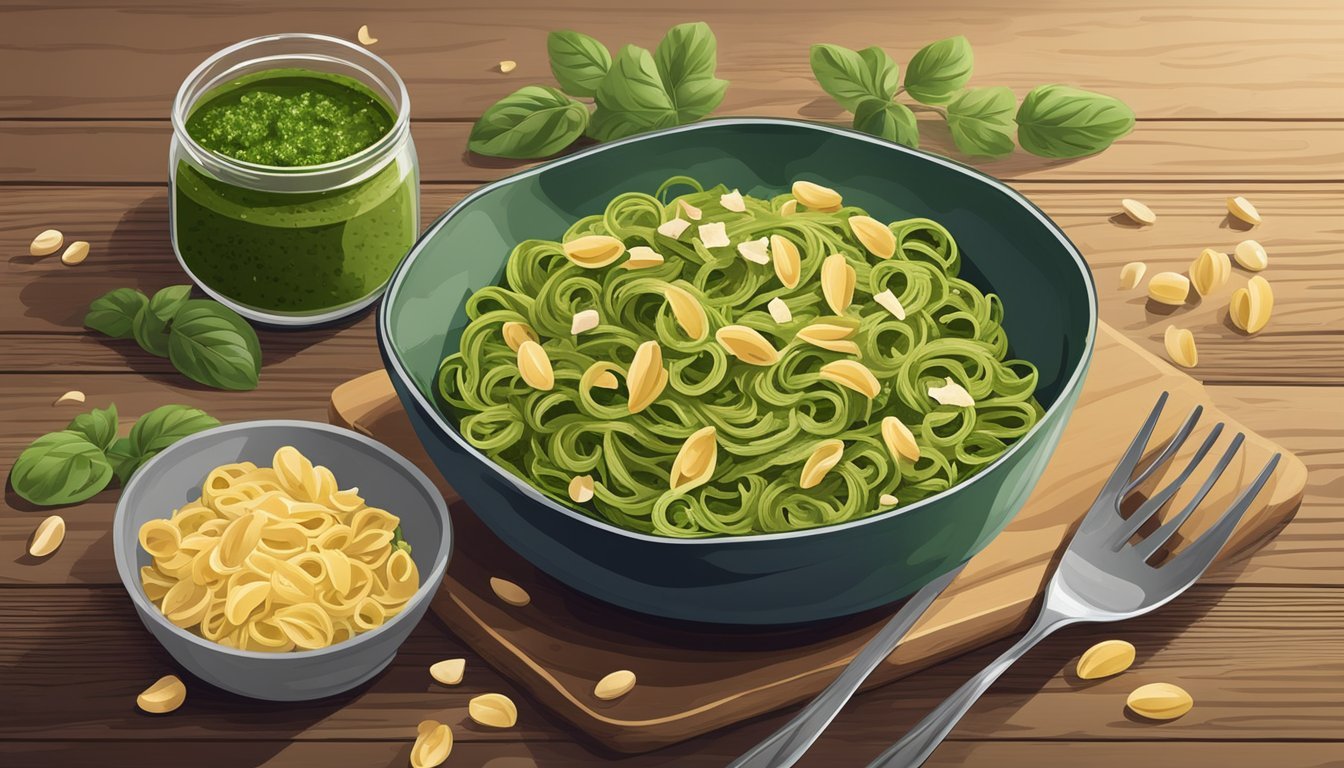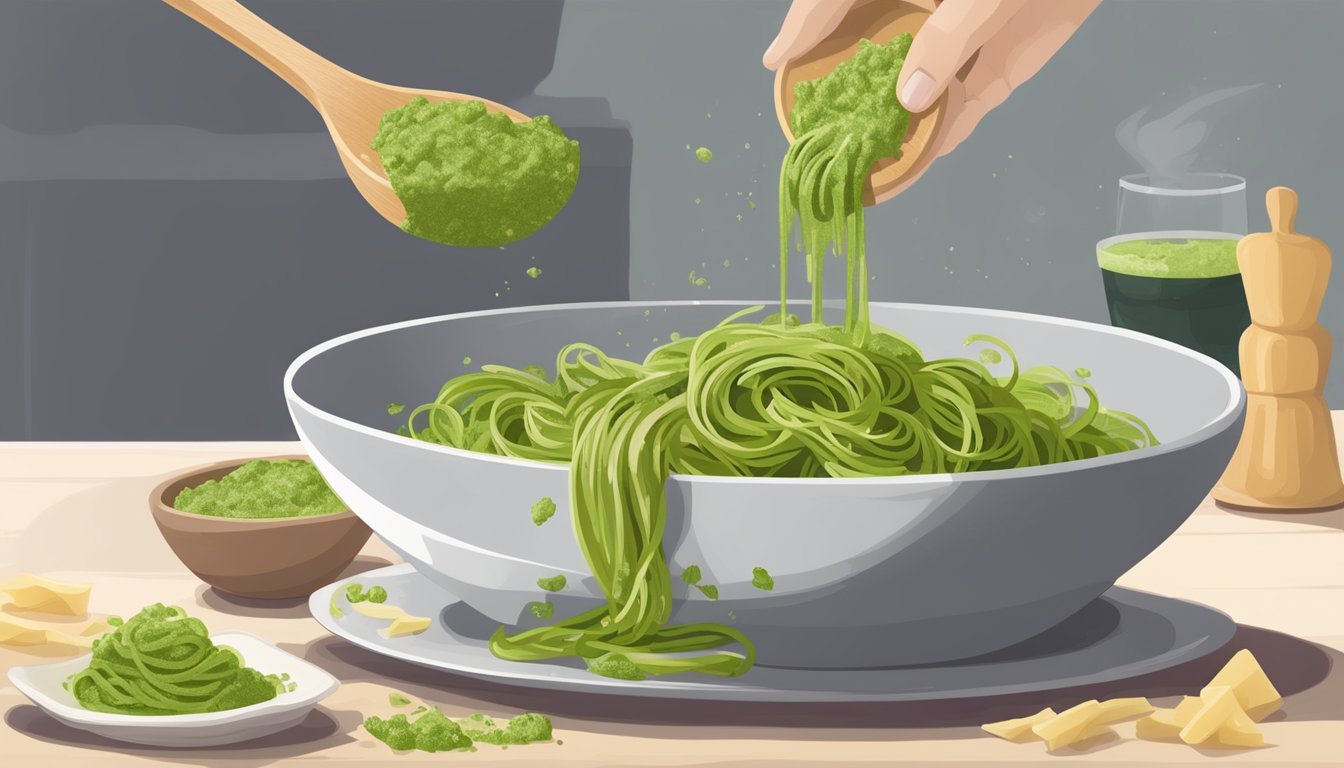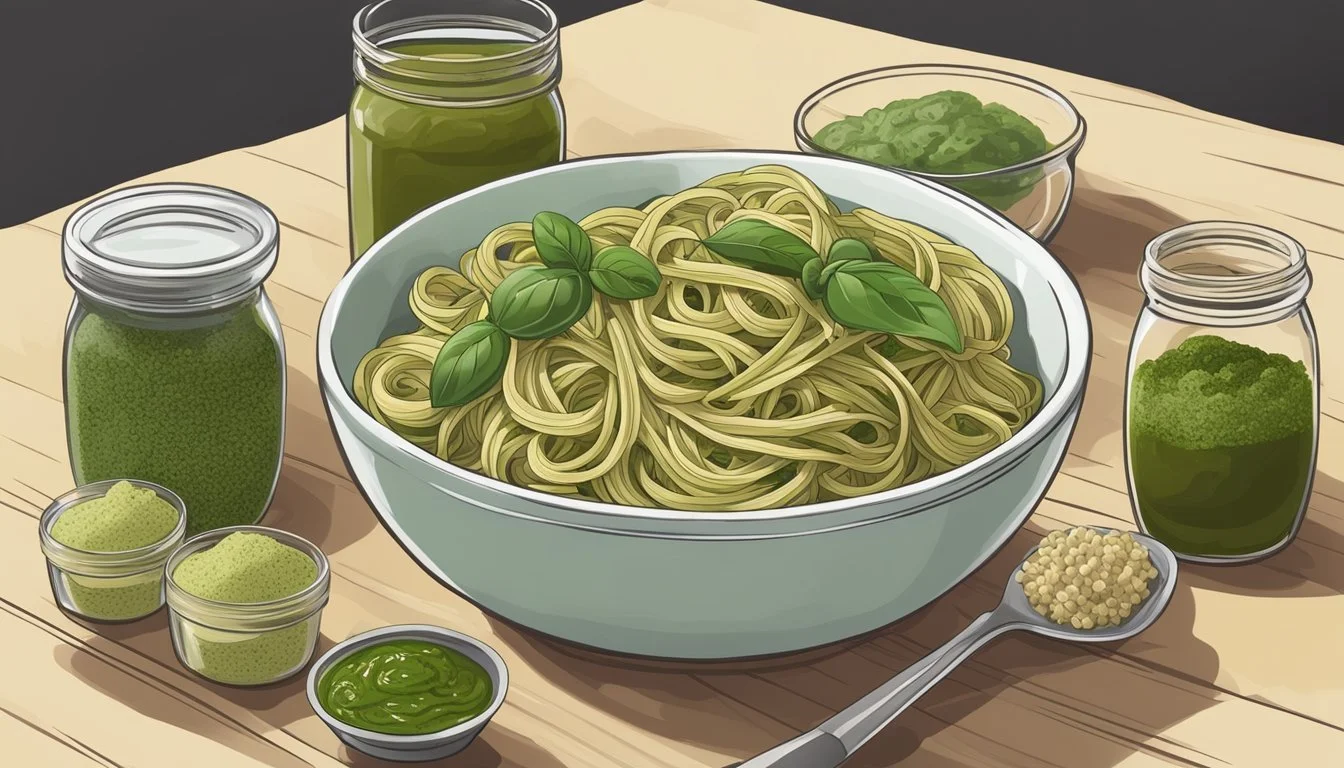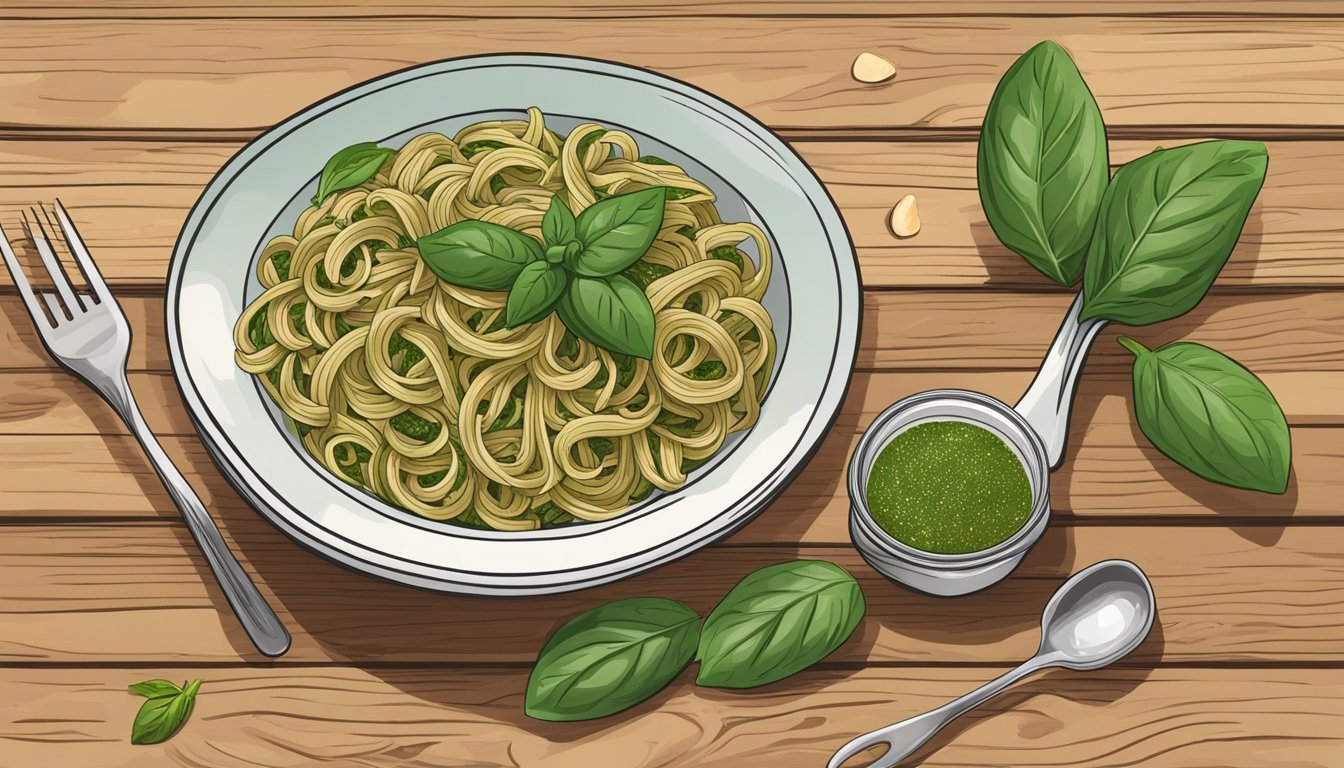Is Pesto Pasta Gluten-Free?
Unpacking the Ingredients for Clarity
Pesto pasta is a beloved dish traditionally made with a base of basil, garlic, pine nuts (What wine goes well with nuts?), Parmesan cheese, and olive oil. The vibrant green sauce boasts a rich, herbaceous flavor that has transcended its Italian roots to become a global favorite. When it comes to gluten-free dining, pesto sauce itself is inherently free of gluten, making it a suitable option for those with celiac disease or gluten sensitivity. Celiac disease is an autoimmune disorder where the ingestion of gluten leads to damage in the small intestine, and adhering to a gluten-free diet is essential.
However, traditional pasta (What wine goes well with pasta?), a key component in this dish, typically contains gluten as it is made from wheat. With the rise in gluten-free diets, there has been a marked increase in the availability of gluten-free pasta alternatives. These are often made from rice, corn, quinoa, or other gluten-free grains. Gluten-free pasta products have significantly improved in texture and taste over recent years, providing a comparable alternative to their wheat-based counterparts.
To ensure a pesto pasta dish is completely gluten-free, both the pasta and any other add-ins need to be verified as free of gluten. This includes checking for cross-contamination in the cooking process, which is a common pitfall in shared cooking environments. Gluten-free pesto pasta can be served as an easy and quick meal, packing the same flavorful punch as the traditional version, while being safe for those avoiding gluten.
Exploring Pesto Pasta Ingredients
When considering if pesto pasta is gluten-free, one must examine the individual components of the dish. This includes a detailed look at both the pesto itself, as well as the types of pasta suitable for a gluten-free diet.
Pesto Components
Pesto typically consists of a few key ingredients: basil, garlic, olive oil, pine nuts, and Parmesan cheese. These components form the foundation of traditional basil pesto. However, variations such as vegan pesto may substitute Parmesan cheese with nutritional yeast or another vegan cheese alternative to maintain its signature flavor. Furthermore, tomato pesto represents another popular variation, where sun-dried tomatoes or ripe fresh tomatoes are included for a tangy twist.
Basil: The essential herb that provides pesto with its fresh and vibrant flavor.
Garlic: Adds a pungent depth of taste.
Olive Oil: Used as a smooth binder that brings the ingredients together into a sauce.
Pine Nuts: Offers a creamy texture and nuttiness; however, they can be substituted with other nuts such as walnuts or almonds in homemade pesto.
Parmesan Cheese: Contributes a salty and savory element. Must be excluded or substituted in vegan alternatives.
Choosing the Right Pasta
The pasta component is where gluten concerns often lie. Traditional pasta is made from wheat, which contains gluten. However, gluten-free pasta options are readily available. These are typically made from a variety of alternative flours, such as rice flour, corn flour, or legume-based flours. Gluten-free pasta comes in many shapes, including but not limited to penne, spaghetti, fusilli, linguini, gnocchi, and ravioli.
When preparing gluten-free pesto pasta, it's crucial to select a pasta that complements the texture and flavor of the pesto sauce:
Penne: Allows the sauce to fill its tube shape.
Spaghetti: Ideal for a more traditional presentation.
Fusilli: The spirals trap the sauce between each layer.
Linguini: Flat surface area holds the pesto well for even coating.
Gnocchi/Ravioli: These thicker pasta options should be well-coated with sauce to balance the dish.
For the best results, one must ensure that any gluten-free pasta is cooked according to the package instructions, often with a watchful eye to prevent overcooking, as gluten-free variants have a different texture and cooking time compared to their wheat-containing counterparts.
Decoding Gluten-Free Pasta Options
For those with celiac disease or gluten sensitivity, pasta does not have to be off the menu. Advances in gluten-free options have made it possible to enjoy a variety of pasta dishes without the worry of gluten.
Gluten-Free Pasta Varieties
There are many types of gluten-free pasta available on the market, primarily made from alternative grains or ingredients to traditional wheat. These include:
Rice Pasta: A common choice, offering a texture similar to regular pasta, which some people find more appealing than others.
Corn Pasta: Made from corn flour, which provides a distinct flavor and a firmer bite.
Multigrain Pasta: A mix of gluten-free grains like quinoa, rice, and corn.
Each gluten-free pasta variety has its own unique taste and texture, closely mimicking the pasta experience for those avoiding gluten.
Cooking Perfect Gluten-Free Pasta
Cooking gluten-free pasta to achieve the ideal 'al dente' texture can be more challenging than with traditional pasta. Here are some tips to ensure perfectly cooked pasta:
Water Ratio: Use plenty of water – generally, one liter per 100 grams of pasta is recommended.
Cook Time: Pay close attention to the package instructions as gluten-free pasta can overcook quickly, turning mushy. Begin checking for doneness a few minutes before the indicated time.
Stirring: Stir frequently to prevent the pasta from clumping together.
Pasta Water Rescuing: Reserve a cup of pasta water before draining. It can be used to adjust the sauce consistency if needed.
Rinse or Not: Unlike regular pasta, some gluten-free pastas benefit from being rinsed with water after cooking to remove excess starch.
In all cases, it is important to avoid overcooking, aiming for a cook time that produces pasta with a firm texture. It's recommended to serve immediately, as gluten-free pasta can continue to absorb sauces and change in texture.
Preparing Pesto
The creation of pesto sauce centers around herbs, typically basil, that are transformed into a vibrant, flavorful paste. Often used in pesto pasta recipes, this sauce can be customized for various dietary preferences, including vegan and dairy-free alternatives.
Pesto Making Techniques
For a traditional pesto sauce, the essential ingredients are fresh basil leaves, garlic, pine nuts, Parmesan cheese, and olive oil. The preparation begins by thoroughly washing the basil leaves and patting them dry to prevent a watered-down flavor. Using a food processor or blender, the basil, garlic, and pine nuts are pulsed until finely chopped, then the cheese and olive oil are added and processed until a smooth consistency is achieved.
Homemade Pesto Quick Steps:
Wash and dry basil leaves.
Pulse basil, garlic, pine nuts in a food processor.
Add Parmesan cheese and olive oil, blend until smooth.
Prep time is minimal, often only 5-10 minutes.
For those who are vegan or dairy-free, traditional Parmesan can be replaced with nutritional yeast or vegan cheese alternatives to maintain the characteristic taste without the dairy. These techniques ensure that anyone is able to enjoy pesto, regardless of dietary restrictions.
Flavor Enhancements and Variations
Expanding beyond the classic basil pesto, one can explore a variety of flavors and ingredients to enhance or modify the base recipe. For instance, substituting basil with spinach or tomatoes introduces a different taste profile and adds a nutritional boost. Another popular herb that can be used is parsley, which offers a distinct freshness to the sauce.
A squeeze of lemon juice not only brightens the flavor but also helps to preserve the vibrant green color of the pesto. Utilizing different nuts such as walnuts or almonds provides new textures and flavors while experimenting with varying proportions of the core ingredients—herbs, nuts, and oil—can tailor the pesto's consistency to one’s preference.
Pesto Variations Table:
Variant Herbs Used Nuts/Seeds Unique Additions Classic Basil Pine nuts Parmesan, Garlic Vegan Pesto Basil/Spinach Walnuts, Almonds Nutritional Yeast Sun-Dried Tomato Pesto Sun-dried Tomatoes Cashews Lemon Juice Parsley Parsley Pistachios or Hemp Seeds Garlic, Lemon Juice
Each variation of pesto sauce has the potential to infuse a unique essence into the dish it accompanies, from the simplicity of a basil-based pesto to more complex and robust flavors that come from the inclusion of various herbs and enhancements.
Nutritional Aspects of Pesto Pasta
Pesto pasta can be a healthy dish with notable nutritional benefits, but it also requires careful consideration of ingredients, especially for those on specific diets like gluten-free or vegan.
Health Benefits and Considerations
Pesto pasta, particularly when made with whole grain or legume-based gluten-free pasta, offers an array of nutrients. The dish typically contains unsaturated fats from olive oil and pine nuts, which can be beneficial for heart health. Pesto is also a good source of vitamin A and vitamin C due to the fresh herbs used, as well as calcium and iron from leafy greens like basil. Moreover, the addition of nutritional yeast in place of traditional hard cheeses can provide a boost of protein and B vitamins.
Common ingredients in pesto such as extra virgin olive oil and pine nuts contribute to the dish's unsaturated fat content, which may help to improve cholesterol levels. However, pesto pasta can also be high in sodium and saturated fat, particularly if store-bought versions of pesto are used or if additional cheeses are added. Diners should also be cautious of the potential high calorie count, depending on the amount of oil and nuts used in the pesto sauce.
Dietary Adjustments and Substitutes
To accommodate various dietary requirements, some adjustments and substitutes can be made:
For a gluten-free version, one could use pasta made from rice, corn, or legume flour instead of wheat pasta. Gluten-free pasta options can vary in their content of fiber, protein, and other nutrients compared to traditional pasta.
To make the dish vegan or dairy-free, substitutes like nutritional yeast or vegan cheese can replace Parmesan or Pecorino typically found in pesto.
By using extra virgin olive oil, a beneficial source of unsaturated fat, this pasta can be part of a diet that supports heart health. However, moderating the amount of oil can help keep the calories in check.
For individuals monitoring their cholesterol intake, it's essential to use plant-based ingredients as they contain no cholesterol. If following a low-sodium diet, one can opt for less salt and add more herbs for flavor.
In crafting a nutritious pesto pasta, one should mind the balance of flavor with health considerations, adapting the recipe with these substitutes to fit personal health and dietary goals.
Assembling Pesto Pasta
When assembling pesto pasta, the focus should be on ensuring that the flavor of the pesto is well-balanced with the pasta while also achieving the desired dish consistency. One should aim for a harmonious blend of pasta and sauce that is neither too dry nor excessively saucy.
Combining and Cooking
For the pesto pasta recipe:
Cook the selected gluten-free pasta according to package instructions until al dente. Total cook time is usually around 10 minutes.
Drain the pasta but reserve about 1/4 cup of the pasta water.
Return the pasta to the pot, adding enough homemade or store-bought pesto to coat the pasta evenly—typically 1/2 to 3/4 cup, depending on the serving size.
Over low heat, gently combine the pasta and pesto. The retained pasta water can be gradually added as needed to achieve a saucy consistency.
Continue to cook and stir frequently, ensuring that the pasta heats through and the sauce becomes adequately hot within about 5 minutes, making sure not to overcook the pasta.
Garnishes and Toppings
To finish the dish:
Sprinkle freshly grated Parmesan cheese on top for added flavor.
Add a modest amount of toasted pine nuts for a pleasant texture and a boost of energy.
Freshly ground black pepper can be added according to taste for a subtle spiciness.
For an easy to make pesto pasta, these additions should be applied conservatively to ensure the main flavors of the pesto shine through. Each serving can be adjusted for individual preferences for cheese or seasoning.
Serving and Pairing Pesto Pasta
Pesto pasta, when made with gluten-free noodles, is a versatile dish that can be enjoyed as a standalone meal or enhanced with a variety of proteins and vegetables. The vibrancy of pesto sauce allows for creative and flavorful combinations in your meal planning.
Serving Suggestions
Pesto pasta can be tailored to accommodate different dietary needs or preferences. For those who require a gluten-free option, ensure that the pasta of choice is labeled as gluten-free. After cooking the pasta, it can be combined with the pesto sauce, adding a tablespoon or two of water to help evenly coat the pasta if necessary. To maintain the freshness and prevent the pasta from drying out, serve immediately while it's still warm.
For a hearty meal, consider complementing the pasta with a side salad featuring arugula and tomatoes, which provide a refreshing contrast to the rich flavor of the pesto. Alternatively, incorporate steamed veggies such as broccoli, asparagus, or green beans to the dish itself for additional nutrition and texture variance.
Pairing with Proteins and Vegetables
Including proteins and vegetables can turn a simple pesto pasta into a satisfying and balanced meal. Here are specific pairing suggestions for incorporating different proteins and vegetables:
Chicken: Shredded rotisserie chicken or diced grilled chicken breast makes a convenient and tasty addition that marries well with the basil and pine nut flavors in pesto.
Seafood: Both shrimp and fish offer a light, protein-rich complement that pairs beautifully with the herbaceous notes of pesto sauce.
Meatballs: For those who prefer red meat, gluten-free meatballs serve as a robust constituent that can withstand the bold flavors of a pesto pasta dish.
A medley of sautéed or roasted vegetables can also elevate the dish. Some vegetables to consider include:
Mushrooms
Zucchini
Peas
Rendered shrimp with a dash of lemon can bring out the brightness in the pesto, while roasted asparagus adds a slightly sweet and earthy element that enhances the overall dish. Remember that the key to a harmonious plate is balance—do not overwhelm the delicate pesto with overly robust flavors.
Additional Pesto Uses
Pesto is a versatile sauce that can enhance a wide array of dishes beyond its classic pairing with pasta. Its rich flavor and easy adaptability make it a staple in many culinary experiments.
Expanding Beyond Pasta
While traditionally used with pasta, pesto can serve as a dynamic addition to numerous other dishes. For example, pizza can be given a colorful twist by using pesto as a base sauce instead of the standard tomato sauce, complementing toppings with its herby essence. To achieve a smooth consistency, utilizing a food processor or blender is crucial when making homemade pesto sauce.
In addition to pizza, salads benefit from pesto, which can be thinned out with extra olive oil or vinegar to create a unique, flavorful salad dressing. This dressing can then be applied in various green, pasta, or grain salads.
Creative Recipe Ideas
Pesto's vibrancy doesn't stop at pizza and salads; it is also an excellent spread for sandwiches and wraps, adding a punch of flavor to each bite. A layer of well-blended pesto on sandwich bread or a tortilla wrap elevates the taste of meats, cheeses, and vegetables.
To cater to differing dietary preferences, chefs can craft their version of pesto using substitutes like sun-dried tomatoes for a tomato pesto or nutritional yeast in place of cheese for a vegan pesto. These variations offer a wealth of new possibilities for using pesto in everyday cooking.
Storage Tips for Pesto Pasta
Effectively storing pesto pasta ensures that it retains its flavor and texture, while also extending its shelf life. This section offers targeted advice for preserving leftover pesto pasta and maintaining its freshness.
Preserving Leftovers
When it comes to leftovers, immediate refrigeration is crucial. They should utilize an airtight container to store the pesto pasta in the refrigerator to minimize exposure to air and moisture, which can lead to spoilage. The pasta will generally keep for approximately 3-5 days when refrigerated properly. If one has a large quantity of leftovers, they may consider portioning them into smaller containers, making it easier to reheat only what will be consumed at one time.
For longer-term storage, freezing is an option. One should ensure the pasta cools to room temperature before transferring it to freezer-safe bags or containers. It's advisable to label the containers with the date of storage. Thawed pesto pasta can be rejuvenated by briefly reheating it, typically in a microwave or on the stovetop with a touch of water to prevent drying out.
Maintaining Freshness
To maintain the freshness of pesto pasta, particular attention should be given to the basil and olive oil components of pesto. These ingredients are sensitive and can lose their character if not stored properly. The pasta should be kept cool and consumed promptly, as the basil can wilt and the olive oil can become rancid over time, affecting the flavor.
An additional tip to maintain the quality of the pesto sauce is to cover the surface with a layer of olive oil before sealing the storage container. This layer acts as a barrier against oxidation and preserves the vibrant green color of the basil. When reheating, one must do so gently, avoiding high heat, which can cause the sauce to separate and the olive oil to lose its flavor profile.
Shopping and Product Recommendations
For those preparing gluten-free pesto pasta, it's essential to choose high-quality, gluten-free ingredients and the proper pasta to ensure a delicious and safe meal for those with gluten sensitivities.
Selecting Quality Ingredients
Basil: A core ingredient for pesto, fresh basil leaves provide the best flavor.
Parmesan Cheese: Authentic Parmesan (Parmigiano-Reggiano) that is labeled gluten-free ensures safety.
Extra Virgin Olive Oil: Select a high-quality extra virgin olive oil for a rich, flavorful pesto.
When purchasing pesto ingredients, one may consider looking for affiliate links related to the products, ensuring quality choices. Additionally, as an Amazon Associate, certified gluten-free ingredients can often be found on Amazon.
Purchasing Gluten-Free Pastas
Gluten-Free Pasta Options: A variety of gluten-free pastas are available:
Brand Type of Pasta Where to Buy Taste Republic Red Lentil Fusilli Amazon, FreshDirect Barilla Various Shapes Amazon, Grocery Stores
Make sure to look for pastas that are certified gluten-free to avoid cross-contamination. If in doubt, it's advisable to read product labels and check if they're from a gluten-free facility.
Understanding Nutritional Information
It's crucial for consumers to discern nutritional content and align it with their dietary requirements. A thorough understanding of nutrition labels on food products, including pesto pasta, can ensure that one’s diet remains consistent with gluten-free or other dietary needs.
Deciphering Nutrition Labels
When examining nutrition information on packaging, individuals should look for the "gluten-free" label to ensure the product does not contain gluten. Nutritional yeast, a common ingredient in vegan pesto, should be verified as gluten-free as well, as it can sometimes be a source of hidden gluten. The label will also detail the number of calories and carbohydrates per serving, which is critical for those managing energy intake or following specific dietary plans such as low-carb or ketogenic diets. Here is an example of what to look for in a nutrition label:
Total Calories: Reflects energy provided by the product.
Total Carbohydrates: Includes sugar, fiber, and starch.
Certifications: Labels like "Certified Gluten-Free" are indicative of safe options for gluten-sensitive individuals.
Labels might also indicate whether a product is vegetarian or vegan, providing additional guidance to those adhering to such lifestyle choices.
Balancing Dietary Needs
Crafting a balanced diet while adhering to gluten-free restrictions requires attention to the nutritional profile of each component of a meal. For someone seeking a gluten-free option, pesto pasta made with gluten-free noodles provides a foundation for a nutrient-dense dish. While the traditional pesto is vegetarian, containing pine nuts, basil, garlic, Parmesan cheese, and olive oil, those seeking a vegan option can choose pesto variations that replace cheese with alternatives like nutritional yeast, which imparts a cheesy flavor without dairy.
In the context of a well-rounded diet, individuals must consider the calories and carbohydrates in pesto pasta in relation to their total daily intake. Inclusion of vegetables like peas can increase the fiber content, while adding proteins such as grilled chicken or cannellini beans can create a more satisfying, protein-rich meal.
Knowing how to read and interpret nutritional information is key to following a balanced, gluten-free diet without compromising on taste or nutritional value.


